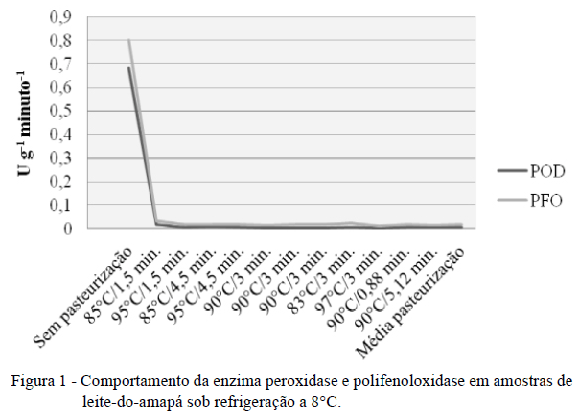The extract of amapazeiro (Brosimum parinarioides Ducke), known as milk-of-amapá, is used by Amazonian populations as food and medicinal sources. The rapid change in color of the latex after extraction indicates the presence of enzymes such as polyphenoloxidase (PPO) and peroxidase (POD), darkening the fresh product and disqualifying it for trading. Thus, this study aimed at evaluating the activity of enzymes PPO and POD from three milk-of-amapá samples collected in amapazeiros in Moju (PA) cooled to 8°C and eleven samples of milk-of-amapá after the pasteurization process in different binomials time / temperature and then cooled to 8°C in order to optimize the storage of the fresh product. After cooling to 8°C, samples from the fresh milk-of-amapá showed significant difference between the values of PER enzyme activity POD, and later there was an increase of activity during the periods analyzed. As it was also observed PPO enzyme activity in the same samples, it appears that this type of conservation was not effective for the POD and PPO enzymes from milk-of-amapá. The samples of pasteurized milk-of-Amapá, and then cooled, showed enzyme activities of PPO and POD significantly different from respective control sample (without pasteurization), what leads to a conclusion that pasteurization in binomials studied, together with the cooling, was effective in reducing the activity of peroxidase and polyphenoloxidase enzymes, reaching to the inactivation of them, being a potencial process for conservation of this product.
milk-of-amapá; Brosimum; browning; pasteurization; cooling





